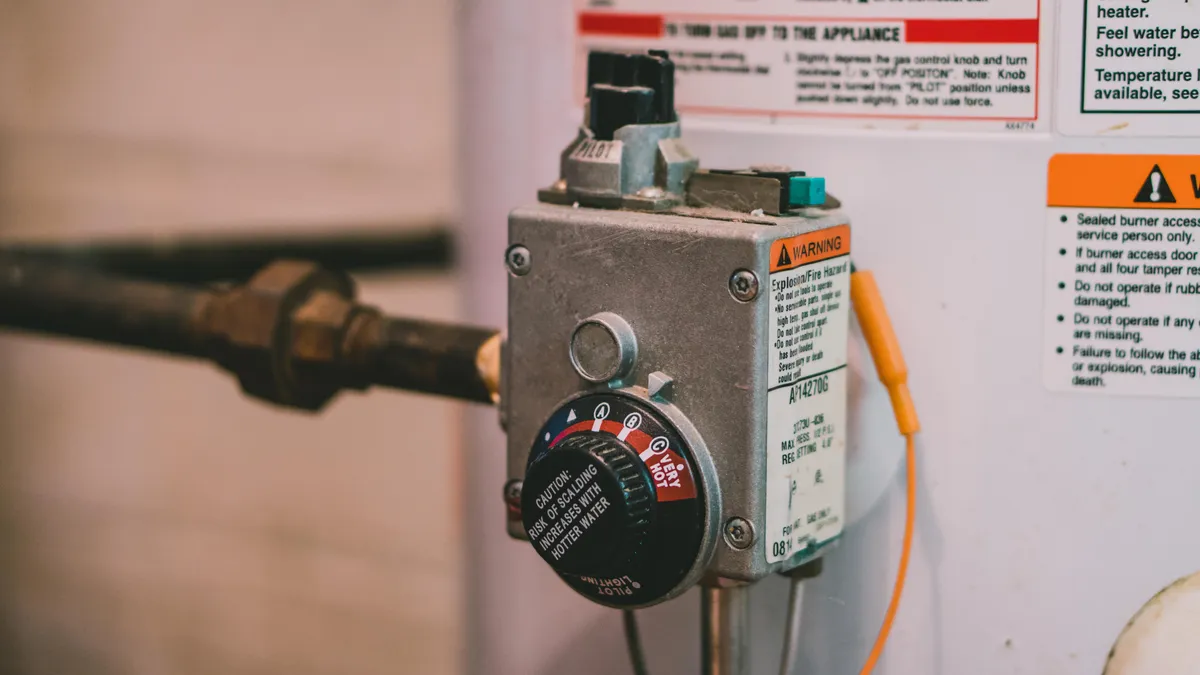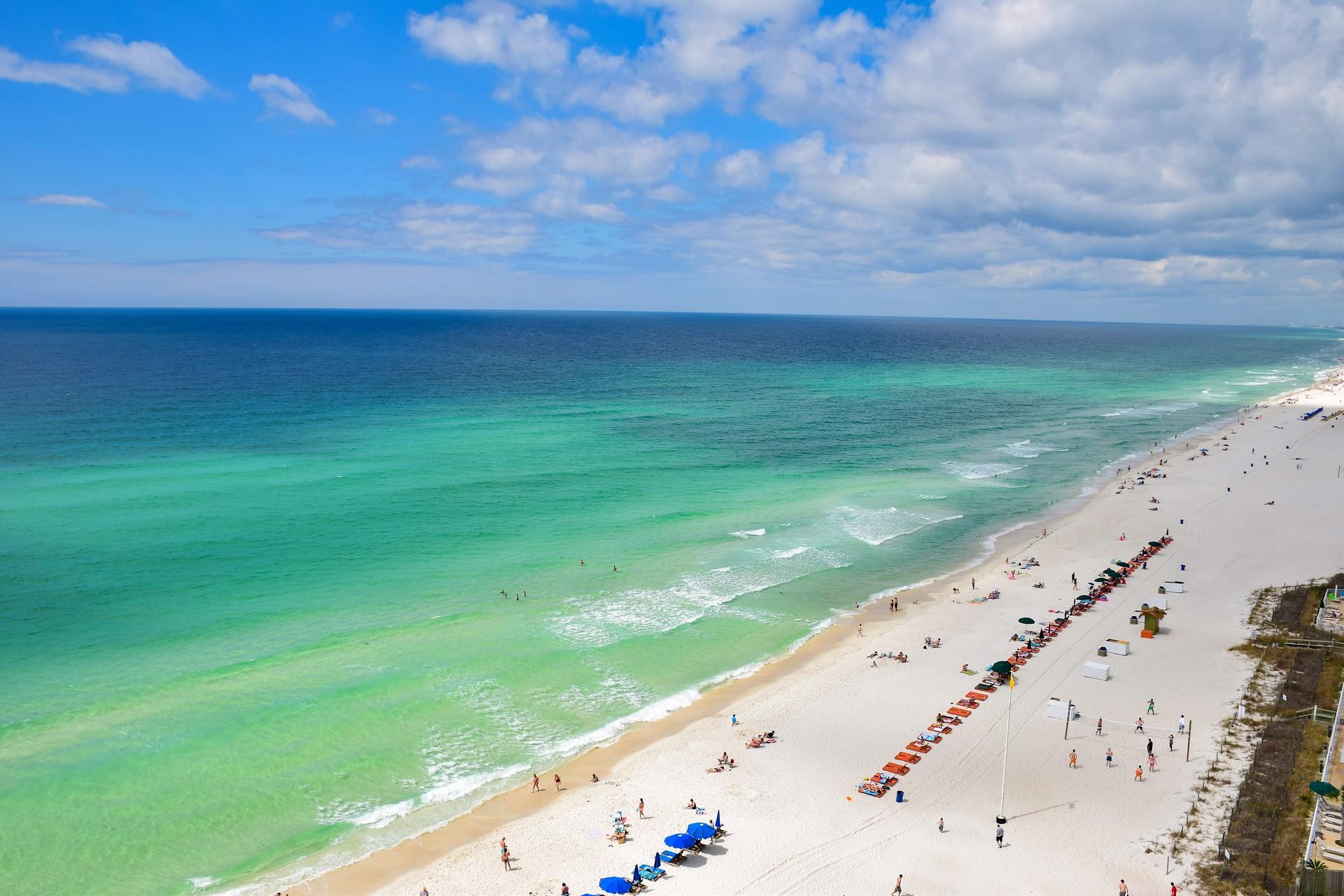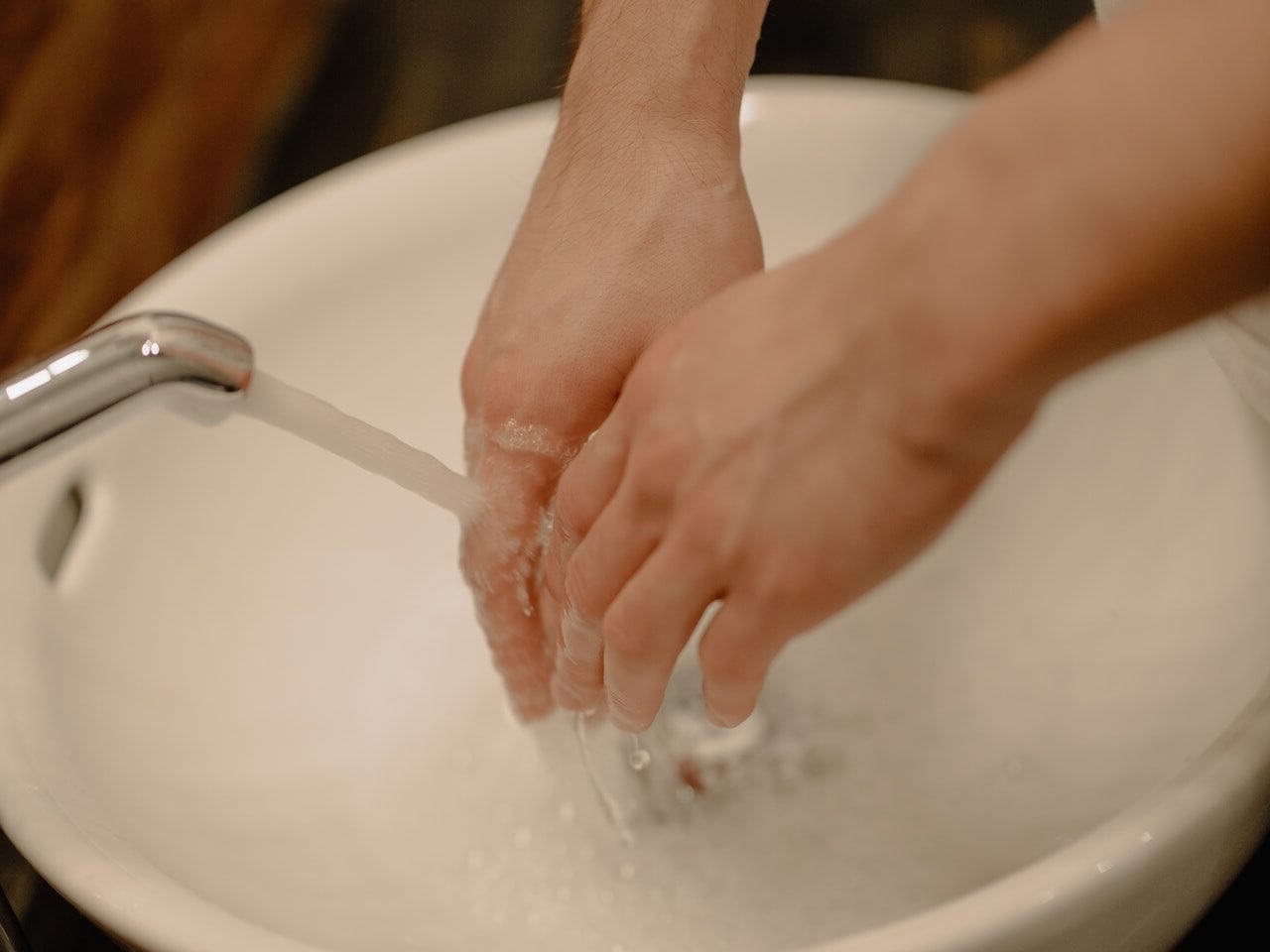Home>Home, Lifestyle & DIY>Understanding And Adjusting Water Heater Temperatures


Home, Lifestyle & DIY
Understanding And Adjusting Water Heater Temperatures
Published: February 22, 2024
Learn how to understand and adjust water heater temperatures for optimal home comfort and energy efficiency. Essential DIY tips for a better lifestyle.
(Many of the links in this article redirect to a specific reviewed product. Your purchase of these products through affiliate links helps to generate commission for Temperatures.com, at no extra cost. Learn more)
Table of Contents
- Importance of Proper Water Heater Temperatures
- Factors to Consider When Adjusting Water Heater Temperatures
- Understanding the Recommended Temperature Range
- Steps to Adjust Water Heater Temperatures
- Safety Precautions When Adjusting Water Heater Temperatures
- Monitoring and Maintaining Water Heater Temperatures
Importance of Proper Water Heater Temperatures
Maintaining proper water heater temperatures is crucial for ensuring comfort, safety, and energy efficiency in your home. The temperature setting of your water heater impacts various aspects of your daily life, making it essential to understand its significance.
Comfort and Convenience
Optimal water heater temperatures provide the comfort and convenience of having hot water readily available for various household activities. Whether it's taking a relaxing shower, washing dishes, or doing laundry, having consistent access to hot water enhances your overall living experience.
Bacterial Control
Proper water heater temperatures play a vital role in controlling the growth of harmful bacteria, such as Legionella, which thrives in lukewarm water. By maintaining the recommended temperature range, typically between 120°F (49°C) and 140°F (60°C), you can effectively prevent the proliferation of bacteria, safeguarding your family's health.
Energy Efficiency
Setting the water heater temperature within the recommended range promotes energy efficiency. When the temperature is too high, it leads to unnecessary energy consumption, resulting in higher utility bills. Conversely, if the temperature is too low, the water heater may need to work harder to meet your hot water demands, leading to increased energy usage.
Prevention of Scalding
Proper water heater temperatures help prevent scalding accidents, especially in households with children or elderly individuals. By maintaining the temperature at a safe level, typically around 120°F (49°C), you reduce the risk of accidental burns while still ensuring an adequate supply of hot water for daily use.
Prolonged Appliance Lifespan
Maintaining the correct water heater temperatures can contribute to the longevity of the appliance. Excessive heat can accelerate the wear and tear of internal components, potentially leading to premature malfunctions or the need for costly repairs. By adhering to the recommended temperature range, you can help extend the lifespan of your water heater.
Understanding the importance of proper water heater temperatures empowers homeowners to make informed decisions regarding temperature adjustments, ultimately benefiting their comfort, safety, and household expenses.
Factors to Consider When Adjusting Water Heater Temperatures
When contemplating the adjustment of water heater temperatures, several crucial factors warrant careful consideration to ensure optimal outcomes. Understanding these factors is essential for homeowners seeking to make informed decisions regarding their water heater settings.
-
Household Needs: Assessing the specific hot water requirements of your household is paramount. Consider the number of occupants, daily hot water usage, and peak demand periods. Larger households or those with high hot water consumption may necessitate higher temperature settings to meet their needs effectively.
-
Safety Concerns: Prioritizing safety is crucial when adjusting water heater temperatures. Homes with young children or elderly individuals should maintain lower temperature settings to prevent scalding accidents. Balancing safety with hot water availability is essential, and homeowners should be mindful of the potential risks associated with excessively high temperatures.
-
Energy Efficiency: Evaluating the energy efficiency implications of temperature adjustments is vital. Higher temperatures can lead to increased energy consumption, resulting in higher utility bills. Conversely, setting the temperature too low may require the water heater to work harder to meet hot water demands, potentially offsetting energy savings. Striking a balance between energy efficiency and comfort is key.
-
Bacterial Control: Understanding the relationship between water temperature and bacterial growth is essential. The recommended temperature range of 120°F (49°C) to 140°F (60°C) is effective in controlling the proliferation of harmful bacteria. Adjusting temperatures outside this range can compromise water safety, potentially exposing occupants to health risks associated with bacterial contamination.
-
Appliance Compatibility: Consider the compatibility of your water heater with the desired temperature settings. Different types of water heaters, such as tankless, electric, or gas-powered units, may have varying temperature adjustment capabilities. It's important to consult the manufacturer's guidelines to ensure that the chosen temperature settings align with the appliance's specifications.
-
Local Regulations: Familiarizing oneself with local regulations and building codes pertaining to water heater temperatures is crucial. Some jurisdictions have specific guidelines regarding the maximum allowable temperature settings for residential water heaters. Adhering to these regulations not only ensures compliance but also contributes to overall safety and public health.
-
Maintenance Considerations: Assess the potential impact of temperature adjustments on the maintenance requirements of the water heater. Extreme temperature settings can accelerate wear and tear on internal components, potentially necessitating more frequent maintenance or repairs. Striving for a balance that meets household needs while minimizing undue strain on the appliance is advisable.
By carefully considering these factors, homeowners can make well-informed decisions when adjusting water heater temperatures, ultimately optimizing comfort, safety, and energy efficiency in their homes.
Understanding the Recommended Temperature Range
The recommended temperature range for water heaters plays a pivotal role in ensuring the safety, comfort, and efficiency of a household's hot water supply. Understanding this range is essential for homeowners seeking to strike a balance between these critical factors.
The generally accepted recommended temperature range for water heaters falls between 120°F (49°C) and 140°F (60°C). This range is carefully determined to address various considerations, including bacterial control, scalding prevention, energy efficiency, and appliance functionality.
Maintaining the water temperature within this range is crucial for controlling the growth of harmful bacteria, particularly Legionella, which thrives in lukewarm water. By setting the temperature above 120°F (49°C), the risk of bacterial proliferation is significantly reduced, contributing to water safety and public health.
Furthermore, adhering to the recommended range helps prevent scalding accidents, especially in households with vulnerable individuals such as children or the elderly. A temperature setting around 120°F (49°C) strikes a balance between preventing scalding injuries and ensuring an adequate supply of hot water for daily activities.
From an energy efficiency standpoint, the recommended temperature range promotes optimal usage of the water heater. Temperatures set within this range minimize energy wastage, as excessively high temperatures lead to increased energy consumption. Conversely, setting the temperature too low can result in the water heater working harder to meet hot water demands, potentially offsetting energy savings.
Additionally, the recommended temperature range aligns with the functionality and longevity of the water heater. Extreme temperatures can accelerate wear and tear on internal components, potentially leading to premature malfunctions or the need for frequent repairs. By adhering to the recommended range, homeowners can contribute to the prolonged lifespan of their water heaters, reducing maintenance costs and enhancing overall appliance reliability.
Understanding the rationale behind the recommended temperature range empowers homeowners to make informed decisions when adjusting their water heater settings. By prioritizing water safety, energy efficiency, and appliance longevity, individuals can optimize their hot water supply while ensuring a comfortable and secure living environment.
Steps to Adjust Water Heater Temperatures
Adjusting water heater temperatures is a straightforward process that allows homeowners to customize their hot water supply according to their specific needs while ensuring safety and energy efficiency. Here are the essential steps to effectively adjust water heater temperatures:
-
Turn Off the Power: Before making any adjustments, it is crucial to turn off the power supply to the water heater. For electric water heaters, this involves switching off the circuit breaker dedicated to the unit. For gas-powered heaters, the gas supply should be turned off to prevent any potential hazards during the adjustment process.
-
Locate the Temperature Control Interface: The temperature control interface is typically located on the exterior of the water heater, often concealed behind a panel. Once the interface is accessible, carefully remove any covering to reveal the temperature adjustment dial or control panel.
-
Consult the User Manual: It is advisable to refer to the water heater's user manual or manufacturer's guidelines to understand the specific instructions for adjusting the temperature settings. Different models may have varying control mechanisms, and following the manufacturer's recommendations ensures proper handling of the adjustment process.
-
Adjust the Temperature Setting: Using a flathead screwdriver or following the designated control mechanism, adjust the temperature setting to the desired level within the recommended range of 120°F (49°C) to 140°F (60°C). It is important to make gradual adjustments and allow time for the water temperature to stabilize before assessing the impact of the changes.
-
Restore Power and Monitor: Once the temperature adjustment is complete, restore the power supply to the water heater. For electric units, this involves switching the circuit breaker back on, while gas-powered heaters require the gas supply to be reinstated. Subsequently, monitor the water heater to ensure that the adjusted temperature meets the household's hot water needs without compromising safety or energy efficiency.
-
Verify the Water Temperature: To validate the effectiveness of the adjustment, check the hot water temperature at various outlets in the household. This includes faucets, showers, and other points of hot water usage. By verifying the water temperature, homeowners can ensure that the adjustment aligns with their comfort and practical requirements.
By following these steps, homeowners can confidently adjust their water heater temperatures to optimize comfort, safety, and energy efficiency in their homes. It is important to approach the adjustment process with caution and attentiveness, prioritizing the well-being of household occupants and the proper functioning of the water heater.
Safety Precautions When Adjusting Water Heater Temperatures
When embarking on the task of adjusting water heater temperatures, it is paramount to prioritize safety to prevent potential hazards and ensure a smooth and secure adjustment process. Implementing the following safety precautions is essential for homeowners undertaking this task:
-
Power Disconnection: Before initiating any adjustments, it is crucial to disconnect the power supply to the water heater. For electric water heaters, this involves switching off the dedicated circuit breaker to cut off electricity to the unit. In the case of gas-powered heaters, turning off the gas supply is imperative to eliminate the risk of combustion or gas leaks during the adjustment process.
-
Protective Gear: Utilizing appropriate protective gear, such as insulated gloves and safety goggles, is advisable when accessing the water heater's temperature control interface. This precautionary measure helps safeguard against potential burns, electrical shocks, or exposure to hazardous substances that may be present during the adjustment.
-
Careful Handling: When accessing the temperature control interface, exercising caution and attentiveness is essential. Avoiding abrupt movements and ensuring steady handling of tools and equipment minimizes the risk of accidental damage to the water heater and surrounding components. Additionally, adhering to the manufacturer's guidelines for handling the control interface is crucial to prevent mishandling or improper adjustments.
-
Temperature Verification: After completing the temperature adjustment, it is imperative to verify the accuracy of the new setting. This involves checking the water temperature at various hot water outlets in the household to ensure that it aligns with the desired level. By confirming the temperature accuracy, homeowners can mitigate the risk of unexpected hot water fluctuations or safety concerns arising from inaccurate adjustments.
-
Restoration of Power: Upon finalizing the temperature adjustment, restoring the power supply to the water heater should be executed with care. For electric units, reactivating the circuit breaker, and for gas-powered heaters, reinstating the gas supply should be carried out cautiously to prevent electrical surges or gas-related incidents.
-
Monitoring Period: Following the adjustment and restoration of power, monitoring the water heater for a designated period is advisable. This allows homeowners to observe the performance of the adjusted temperature setting, ensuring that it adequately meets the household's hot water needs while maintaining safety and energy efficiency.
By adhering to these safety precautions, homeowners can approach the task of adjusting water heater temperatures with confidence and diligence, prioritizing the well-being of household occupants and the proper functioning of the water heater. Implementing these measures fosters a secure and efficient adjustment process, contributing to a comfortable and safe hot water supply in the home.
Monitoring and Maintaining Water Heater Temperatures
Monitoring and maintaining water heater temperatures is an ongoing responsibility that ensures the consistent delivery of safe and comfortable hot water while promoting energy efficiency and appliance longevity. By implementing proactive measures and periodic assessments, homeowners can optimize their water heater's performance and address potential issues before they escalate.
Regular Temperature Checks
Regularly checking the water heater's temperature is essential to verify that it aligns with the desired setting within the recommended range. This can be accomplished using a reliable thermometer at the hot water outlets in the household. By comparing the measured temperature with the set temperature, homeowners can promptly identify any discrepancies and take corrective action if necessary.
Assessing Hot Water Quality
In addition to temperature checks, assessing the quality of the hot water is crucial for detecting any signs of contamination or irregularities. Monitoring for unusual odors, discoloration, or sediment in the hot water can indicate potential issues within the water heater, prompting homeowners to seek professional inspection and maintenance to address underlying concerns.
Flushing and Maintenance
Periodic flushing of the water heater tank is an effective maintenance practice that helps remove sediment and mineral buildup, contributing to improved efficiency and prolonged appliance lifespan. Flushing the tank at regular intervals, as recommended by the manufacturer or a qualified technician, minimizes the risk of performance issues and ensures the consistent delivery of clean and hot water.
Professional Inspections
Engaging the services of a qualified technician for routine inspections and maintenance is highly beneficial for ensuring the optimal functionality of the water heater. Professional inspections encompass comprehensive assessments of the heating elements, thermostat, safety valves, and overall system performance, allowing for early detection of potential issues and timely remediation.
Energy Usage Monitoring
Monitoring the energy consumption of the water heater provides valuable insights into its efficiency and performance. Tracking energy usage patterns and identifying any significant deviations can indicate underlying issues, such as heating element malfunctions or thermostat irregularities, prompting homeowners to take corrective measures or seek professional assistance as needed.
Temperature Adjustment Evaluation
Periodically evaluating the effectiveness of the water heater's temperature setting is essential, especially in response to changes in household hot water usage or seasonal variations. Assessing the adequacy of the current temperature setting ensures that it continues to meet the household's needs while aligning with safety and energy efficiency considerations.
By diligently monitoring and maintaining water heater temperatures, homeowners can uphold a reliable and efficient hot water supply in their homes while mitigating potential risks and optimizing energy usage. This proactive approach contributes to a comfortable and secure living environment, ensuring that the water heater operates at its best for the benefit of the household.












